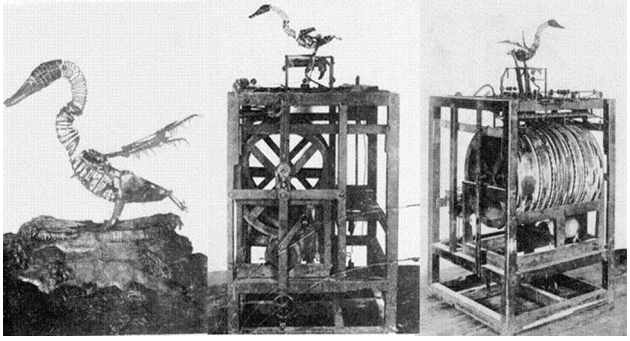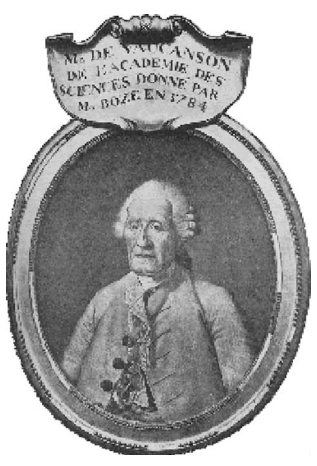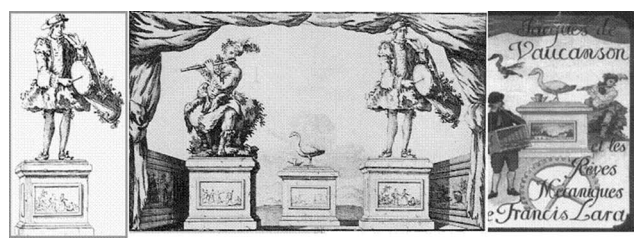created 2025-03-28, & modified, =this.modified
rel: The Machine As Seen at the End of the Mechanical Age - MoMA
“I own freely, that I am surpriz’d myself to see and hear my Automaton play and perform so many and so differently varied Combinations; And I have been more than once ready to despair of succeeding; but Courage and Patience overcame every Thing.”
Voltaire – France now had as its glorious mascot, a golden creature famous for its excrement.
The Canard Digérateur, or Digesting Duck, was an automaton in the form of a duck, created by Jacques de Vaucanson and unveiled on 30 May 1764 in France.
Feigned Feces production, amazing:
The mechanical duck appeared to have the ability to eat kernels of grain, and to metabolize and defecate them. While the duck did not actually have the ability to do this—the food was collected in one inner container, and the pre-stored feces were “produced” from a second, so that no actual digestion took place.
In 2002, Belgian conceptual artist Wim Delvoye introduced the world to his “Cloaca Machine”, a mechanical art work that actually digests food and turns it into excrement, fulfilling Vaucanson’s wish for a working digestive automation. Many iterations of the Cloaca Machine have since been produced; the latest iteration sits vertically, mimicking the human digestive system. The excrement produced by the machine is vacuum-sealed in Cloaca-branded bags and sold to art collectors and dealers; every series of excrements produced has sold out.
The duck had a gold-plated copper exterior and more than a thousand moving parts, including a functional gastrointestinal system synthesized from de Vaucanson’s work with rubber. The duck could bend its neck, ingest water and corn meal, swallow, preen itself, flap its wings, and, the grand finale, defecate.
A single wing had more than 400 articulating pieces.

A Note on the Fife and Tambour Player
This humanoid was noted to appear like a life-sized man, dressed in provincial shepherd’s clothing and could play 20 different tunes.

